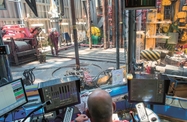Tanzania has come a step closer to setting out the terms for the construction of a liquefied natural gas (LNG) project, which has the potential to bring about major economic gains if realised.

In mid-April a consortium of international oil companies submitted a draft heads of terms to the government for a proposed $30bn LNG plant and export terminal in Lindi on the south-eastern coast. Earlier ministry recommendations suggest the facility will have two trains, each with a capacity of 5m tonnes per annum.
Prepared by five major oil firms looking to take part in the project – ExxonMobil, Norway’s Statoil, Singapore’s Pavilion Energy, the UK’s BG Group and London-based Ophir Energy – the draft brings the project one step closer to a “host government agreement” setting out foreign investor obligations and the role of the state oil firm, Tanzania Petroleum Development Corporation (TPDC).
Talks have been ongoing since September last year, and authorities expect to reach a final agreement with the oil companies by the end of 2018.
Broader impact
In one gauge of the investment’s significance, the central bank said in January that just starting construction on the plant could alone lift GDP growth by two percentage points. Revised estimates put last year’s growth rate at 6.9%, and the treasury currently projects this to reach 9% by 2020 – before factoring in the potential project.
The LNG plant would form part of a broader push by the country to increase exploitation of its underground wealth. The IMF estimates that as its natural resources are developed, Tanzania could see tax revenues – which were $6.6bn last year – grow by $3bn-6bn following a Petroleum Act passed in 2015 that set new royalty rates.
As with its neighbours in Kenya and Mozambique, a supportive price environment and improvements in technology have helped uncover a wealth of new offshore hydrocarbons deposits in Tanzania.
Most of the country’s natural gas was discovered in the past seven years, with one of the most recent finds coming in February 2016, when UAE-based Dodsal Group tapped deposits of 2.17trn cu feet in the Ruvu Basin worth an estimated $8bn. This raised total reserves to 57trn cu feet, some 86% of which is located offshore, according to the energy ministry.
Development obstacles
As a result, the potential benefits of the project are significant. However, it has had to navigate a number of hurdles to reach its current stage,, and given the sheer size of the LNG plant, there are still a number of variables to account for.
Some of the challenges related to securing the more than 2000 ha of land needed to develop the project were overcome in January, however, when the government awarded the title deed for the prospective site to TPDC.
However, Oystein Michelsen, Statoil’s country manager for Tanzania, told international media in November that a final investment decision was at least five years out, and that construction of the plant could take an additional five years.
Speaking to OBG, Mark Fraser, president and managing director of ExxonMobil E&P Tanzania, highlighted some of the challenges that lay ahead in getting the project off the ground.
“We are still in the early stages of understanding how to overcome the topography, which involves deep canyon systems at those water depths; it is technically very challenging and will require innovative engineering solutions,” he said.
“The LNG project represents a complex technical, commercial and project management challenge and requires tens of billions of dollars of capital investment. However, it is surmountable with good stakeholder alignment and collaboration.”
The National Gas Utilisation Master Plan released last year by the Ministry of Energy and Minerals showed more than 40trn of the 47trn cu feet in then-known offshore reserves were deepwater, making them difficult to access.
“It is in the nature of oil and gas production that only a portion of reserves in place can actually be recovered from the reservoir. This effect is more pronounced when dealing with deep water locations,” Marc den Hartog, Shell’s vice-president for East Africa and director of its subsidiary BG Tanzania, told OBG. “Realistically, only 50-70% of the gas can actually be produced, because the rest is not technically feasible, or not economically viable, or both.”
Rising competition
The plant is also likely to face increased competition from other planned LNG plants. Its southern neighbour, Mozambique, is currently developing a two-train LNG project with 12m-tonne capacity, in conjunction with US-based Anadarko and Italy’s Eni.
After a four-year construction period, operations are expected to begin in 2022 or 2023, with exports destined for Asia.
Tanzania also faces competition farther afield: Australia plans to open six new LNG plants by 2020 aimed at growing Asian demand, while in the US shale gas capacity is expected to continue increasing, which could lead to a glut in global supply.


